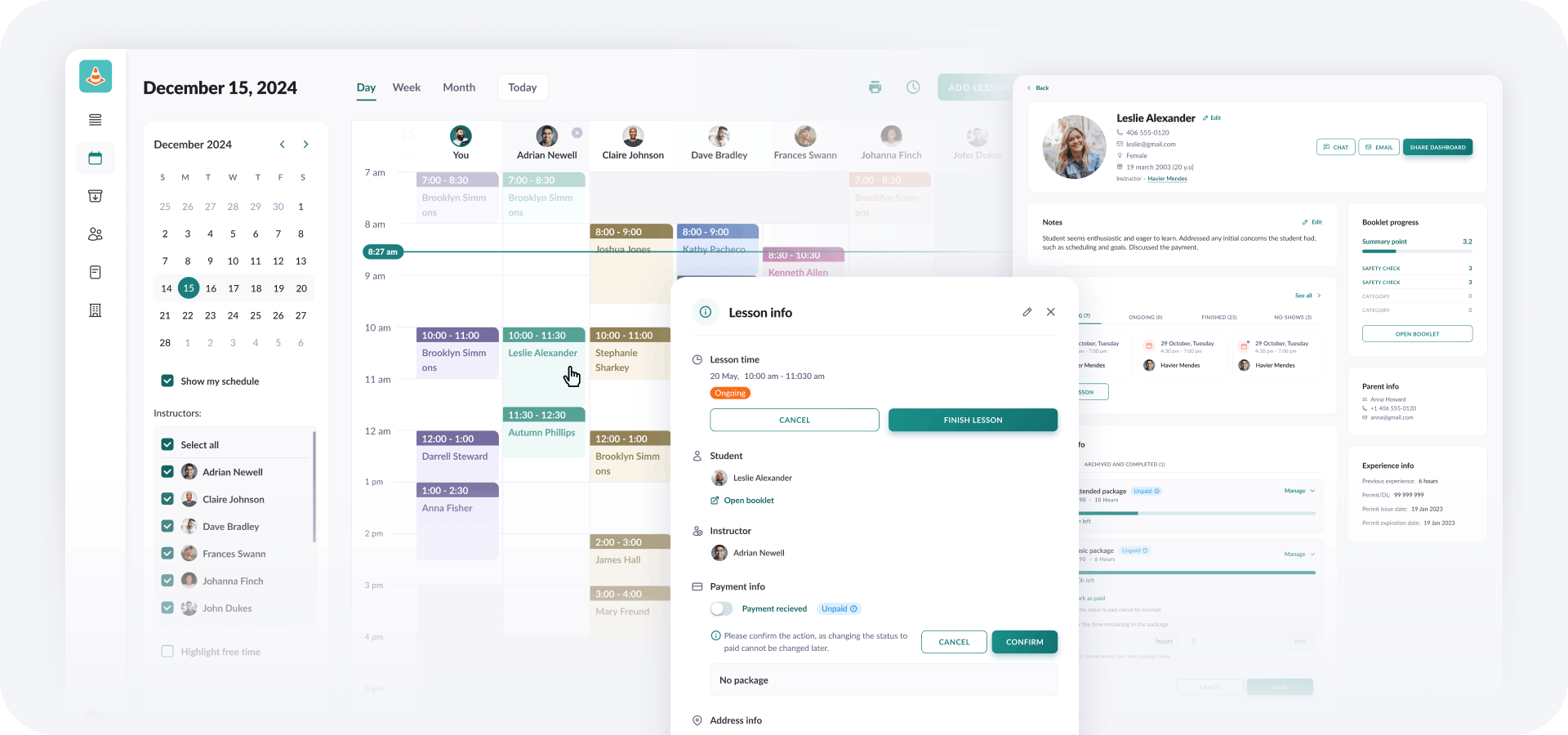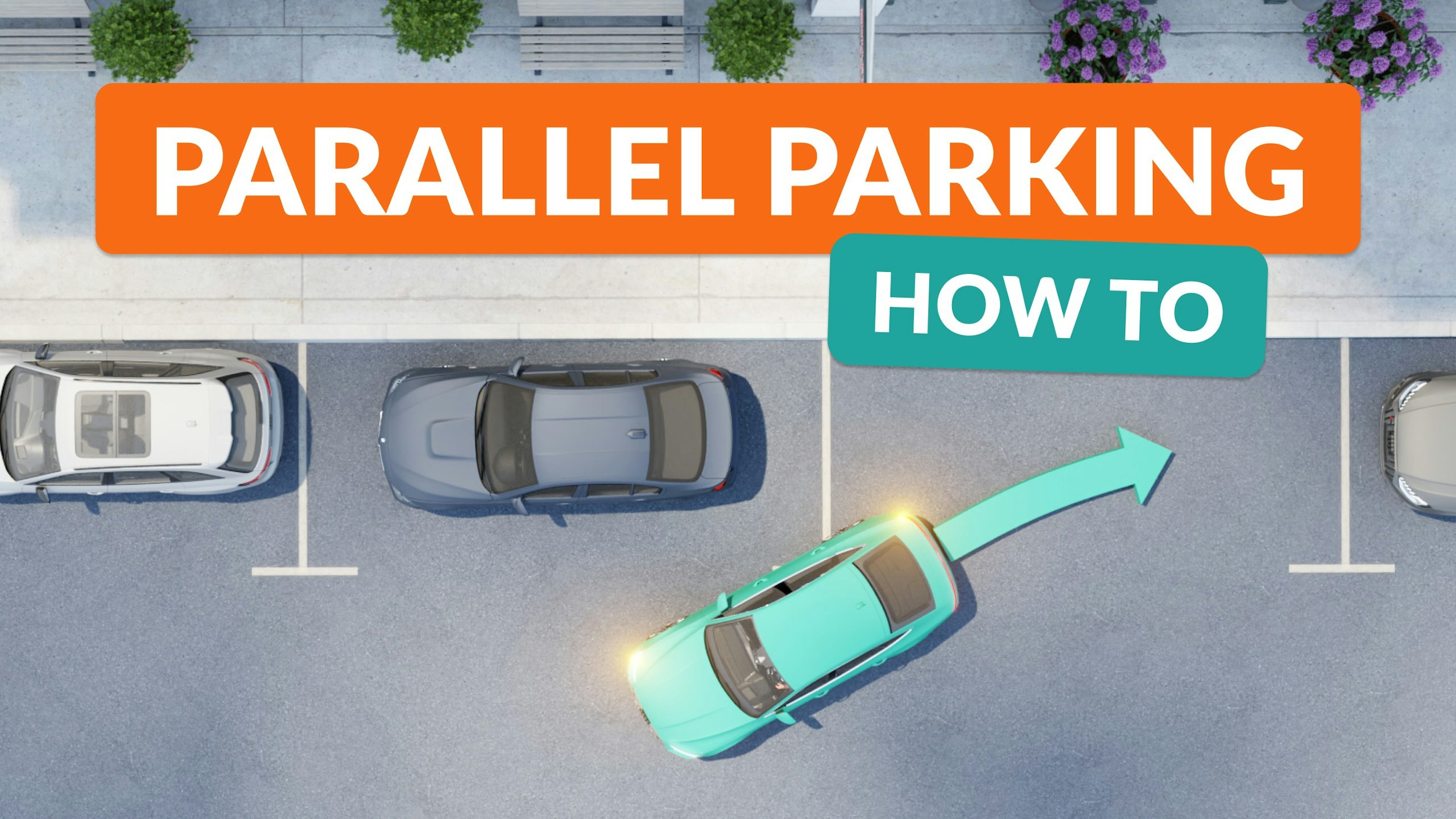
How to Parallel Park for Beginners: Step-by-Step Guide [Video]
Sooner or later, you will have to parallel park. Whether it’s for your driving test or just day-to-day driving, it’s a skill worth mastering. And even though it can be a daunting task for new drivers, don’t worry, we’ve got you.
In this guide you’ll discover:
- 6 steps on how to nail parallel parking.
- Tips on how to overcome the parallel parking challenges.
- Complete list of states that don’t include parallel parking in a road test.
How to Parallel Park in 6 Easy Steps
- Find a large enough parking spot
- Place your car parallel to the car in front
- Turn the wheel fully to the right and begin to reverse
- Turn your wheels straight and reverse further
- Turn your wheels fully to the left and reverse into position
- Straighten your wheels and creep forward into position
1. Find a large enough parking spot
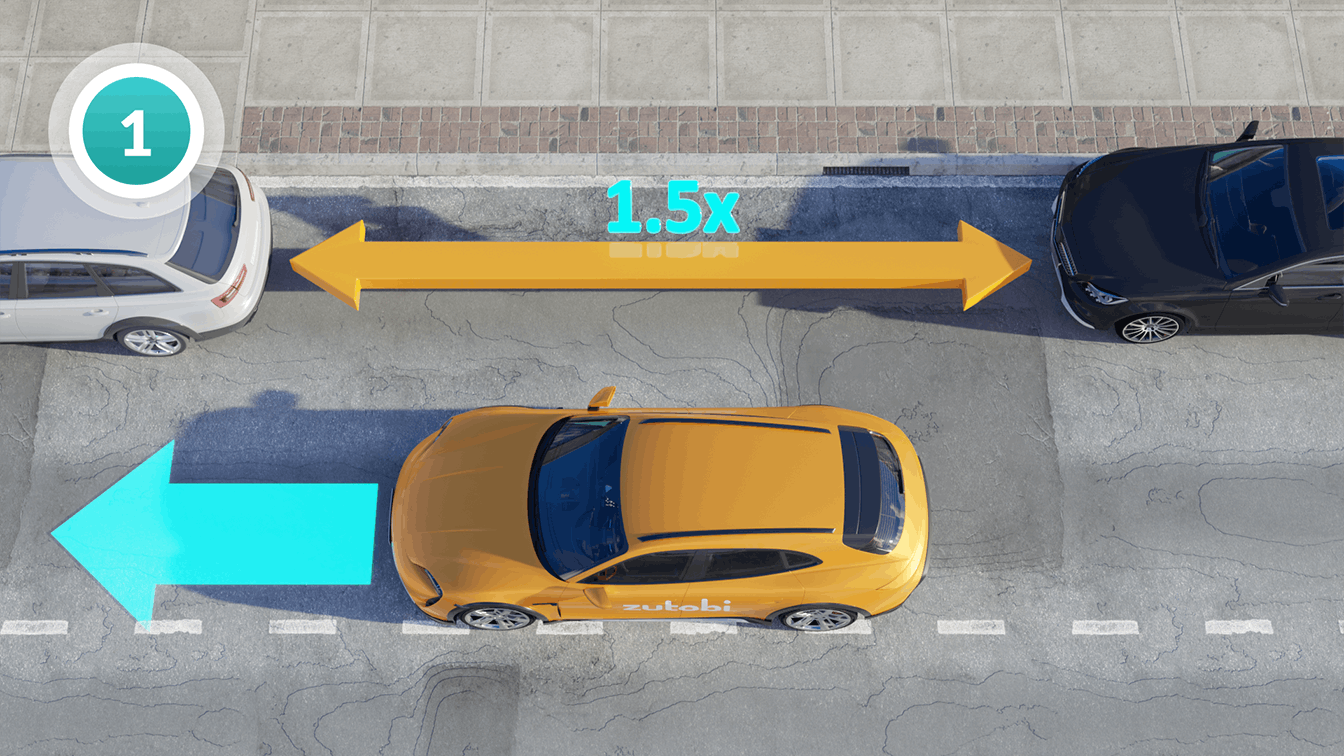
Start by finding a large enough parking spot. The golden rule is to keep a gap of at least 1.5 times the length of your car to have enough room for a safe maneuver. Experienced drivers can parallel park with less space, but for beginners, we recommend increasing the interval because it’s your safety margin for getting in and out.
2. Place your car parallel to the car in front
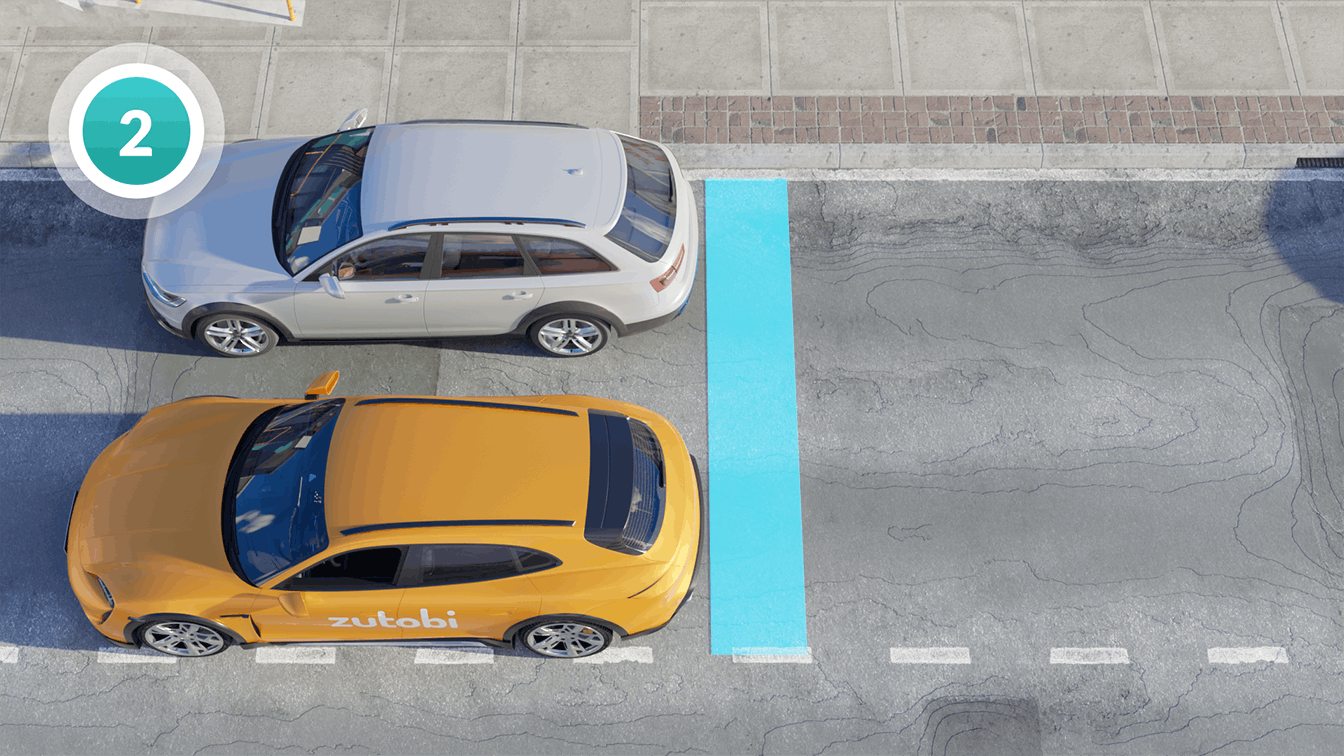
Now, it’s time to place your car completely parallel to the car you’ll be behind. To do this, align your passenger side mirror with the driver’s side mirror of the other vehicle. Place yourself about 2-3 feet from the side of the parked car.
3. Turn the wheel fully to the right and begin to reverse
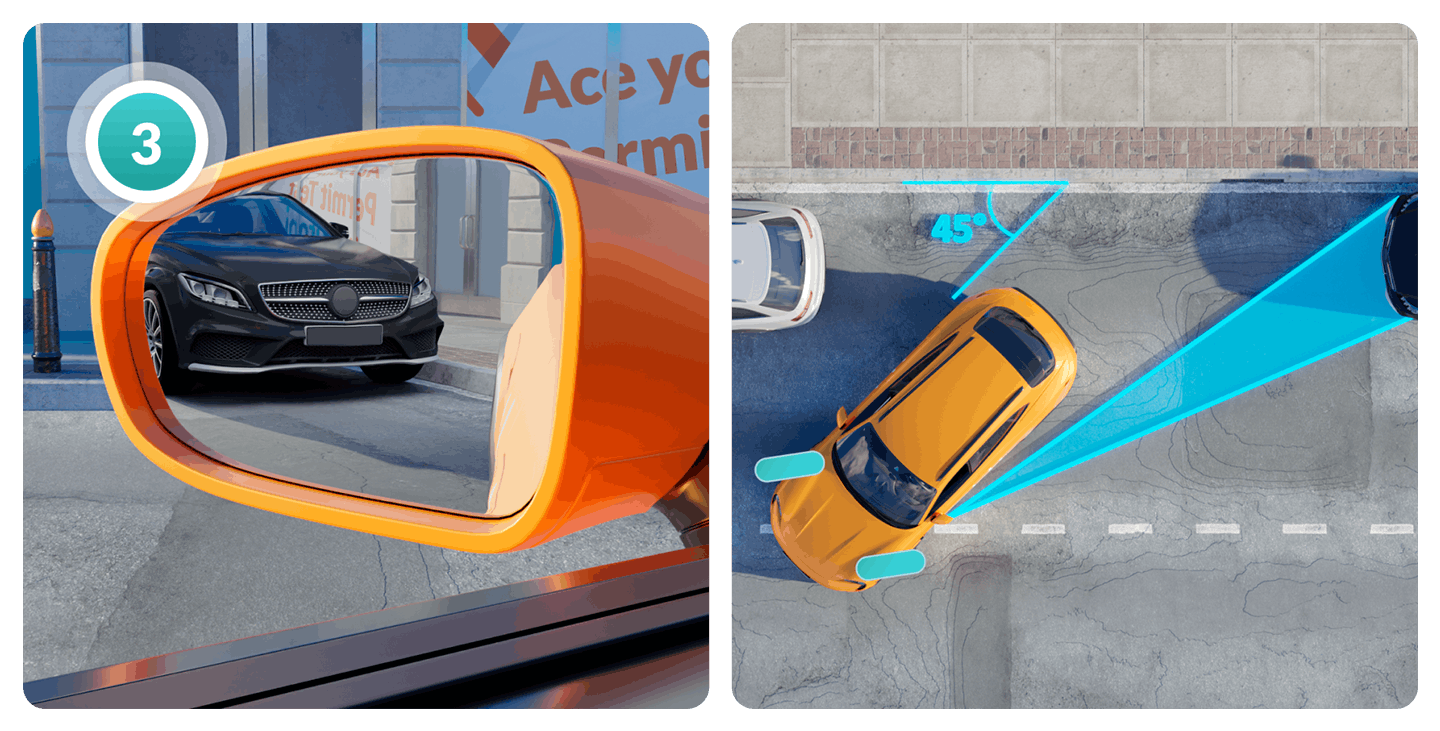
Turn the steering wheel to the right and slowly back up. Stop once you can see the car behind you in your left side mirror. When the entire front of the car is visible in the mirror, you’re good.
4. Turn your wheels straight and reverse further
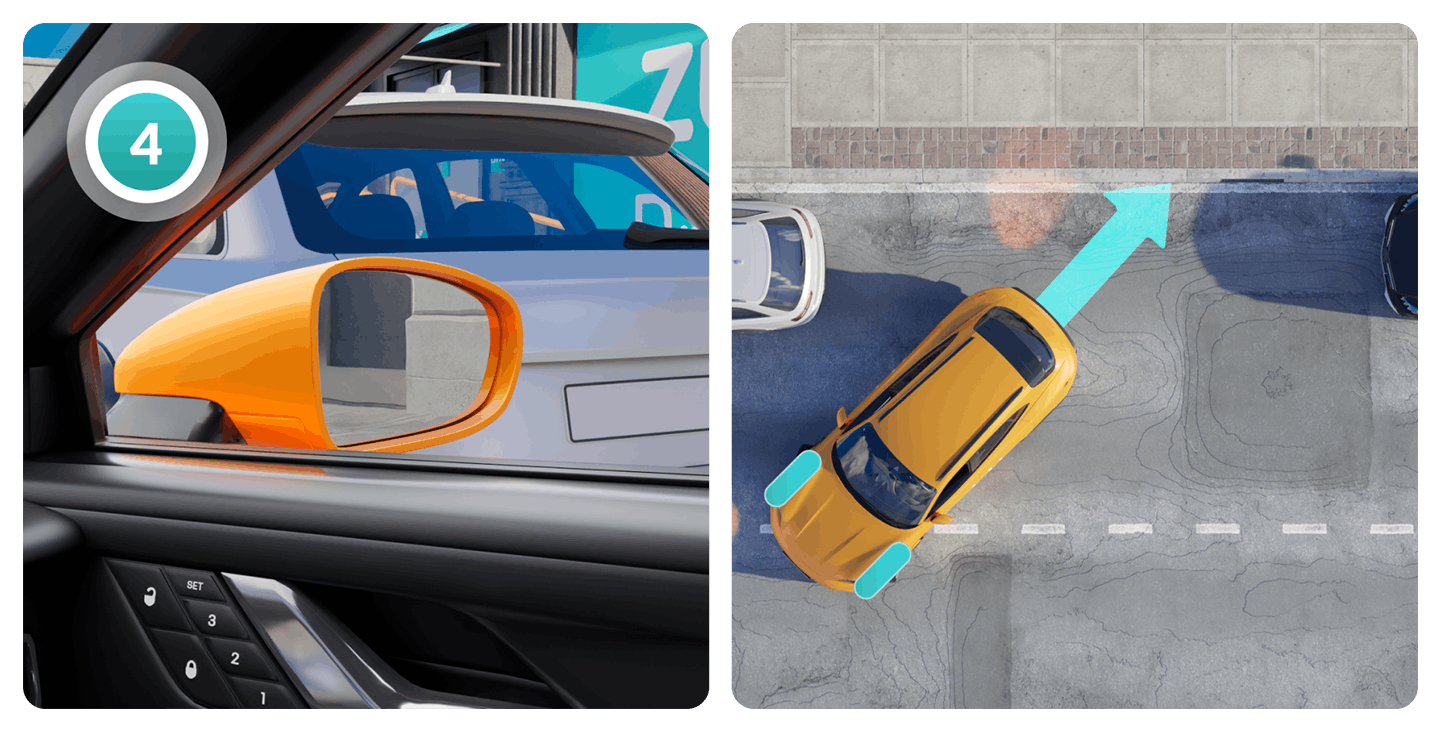
Once you can see the whole front of the car in your left side mirror, you need to reverse straight and move closer to the curb. Turn the car’s wheels straight and reverse. Stop when your right side mirror covers the vehicle’s tail light in front.
5. Turn your wheels fully to the left and reverse into position
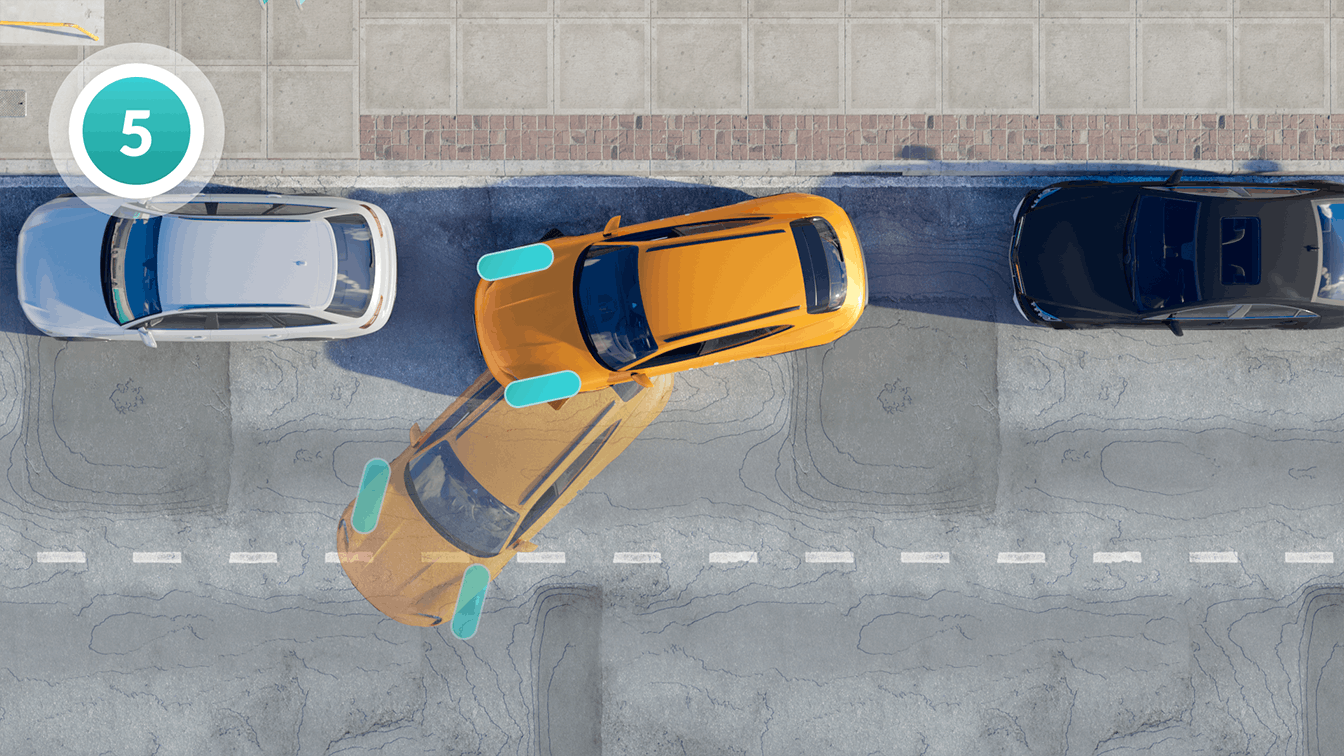
When your right side mirror covers the vehicle’s tail light in front, you can start moving in. First, turn your wheels entirely to the left. Second, reverse slowly until you’re in. Third, adjust your position by driving forward or by reversing to be in a good spot between the two cars.
6. Straighten your wheels and creep forward into position
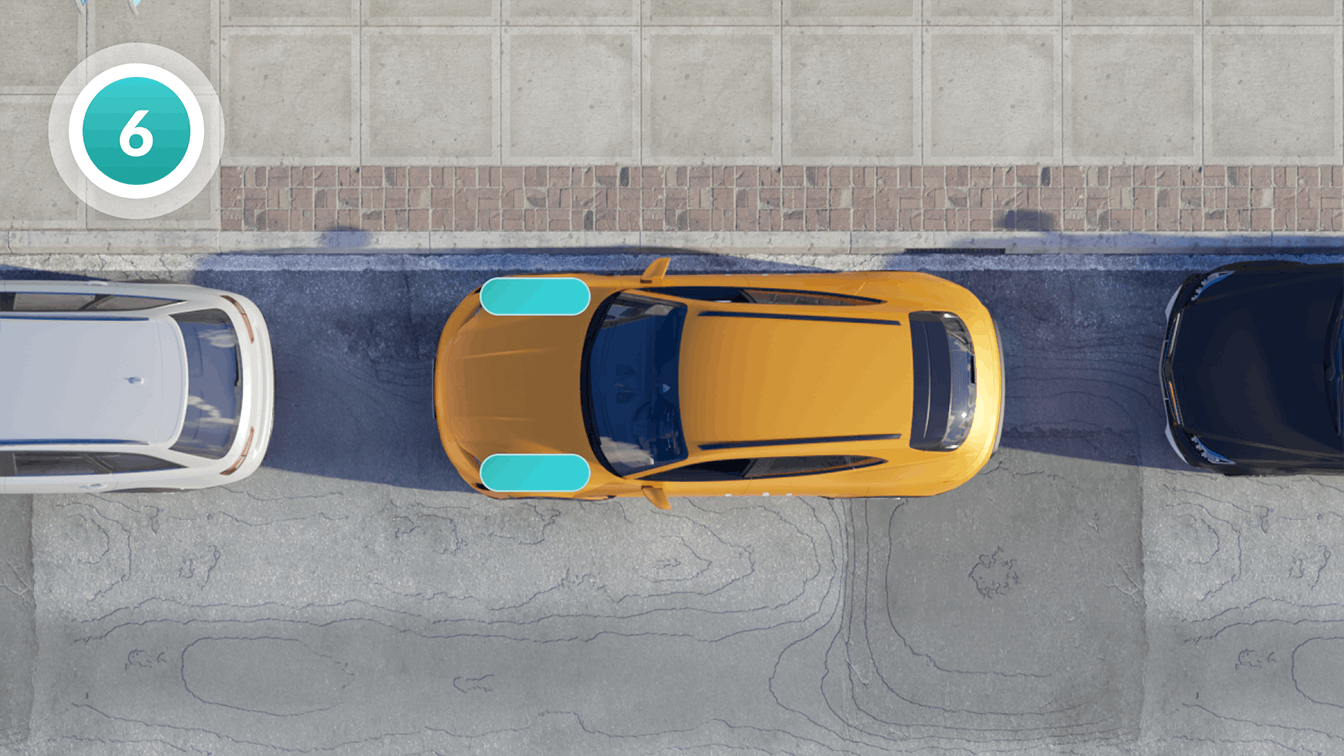
At last, you should straighten up your position. Start by straightening the wheels, and if you need, gently creep forward by driving forward or by reversing. If you are parked on a hill or sloping driveway, you want to turn your wheels in a direction that prevents you from moving into the traffic path.
Are you a new driver?
Our Behind-the-Wheel (BTW) online course is the perfect solution to fast-track your journey to driving confidence and success. Featuring professional online driving lessons, easy-to-follow step-by-step guides, parent training resources for effective at-home practice, and immersive virtual driving simulations, you’ll gain real-world skills in a risk-free environment. Used by driving schools in their classroom education, our course ensures you receive top-quality training that’s recognized across the industry.
Addressing the Parallel Parking Challenges
To master parallel parking you must turn it into a habit. Regular practice in different parking spaces and environments will help you become more comfortable when parking and ensure you stay relaxed in critical situations.
Correcting Misalignment
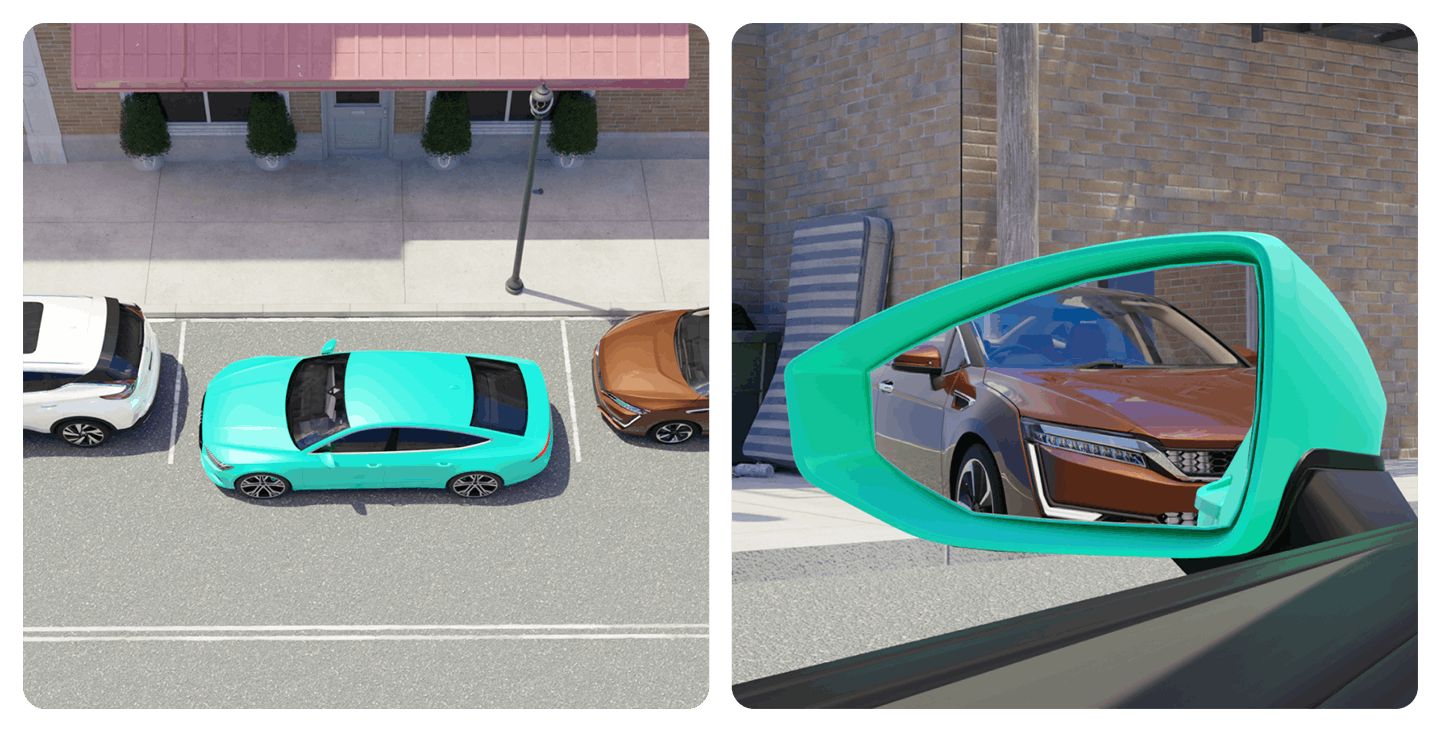
Misalignment occurs when your car is not parallel to the curb or is too far from it. Here are tips on how to correct it.
- Start Over: If you notice that your vehicle is misaligned, stay calm, pull out of the parking space, and realign your vehicle to be parallel to the car in front. This provides a clean slate to attempt parking again.
- Reverse with Caution: While reversing slowly, ensure you’re frequently checking your mirrors and blind spots for any incoming traffic or pedestrians. Turn the steering wheel as needed, making slight adjustments to keep your car parallel to the curb.
- Make Gradual Adjustments: If your car remains misaligned, gently move forward to readjust the angle and attempt to park again. Making small, incremental adjustments is crucial to avoid overshooting the alignment.
Overcoming Parking Anxiety
The parking anxiety is common among new drivers. To overcome this issue, start by practicing in a quiet, open space with cones to build your confidence. Focus on mastering the control over the vehicle and gradually progress to busier areas. Eventually, your parking anxiety will fade, paving the way for a more assured and proficient driving experience.
Practicing Parallel Parking with Cones
How to parallel park with cones in 4 easy steps:
- Find a street with little-to-no traffic.
- Place two cones about 15 feet apart to create a similar zone to a real parking spot.
- Practice until you get the gist of the maneuver and feel confident enough.
- Move on to real-life parallel parking.
It’s a good choice to practice parallel parking using two cones instead of real cars. That way, you can get skilled without the stress of possibly damaging your vehicle or someone else’s. Remember, practice makes perfect, and it’s always better to be safe than sorry.
Parallel Parking on the DMV Permit Test
In many states, parallel parking is included in the DMV Permit Test, and messing up can result in an automatic fail. Check this list to find out in which states you won’t need to demonstrate parallel parking on the test.

Full list of states that don’t require parallel parking on the DMV permit test:
- Alabama
- Arkansas
- California
- Colorado
- Florida
- Illinois
- Maryland
- Michigan
- Nebraska
- North Carolina
- Ohio
- Oregon
- South Dakota
- Tennessee
- Virginia
- Wyoming

Avoid beginner mistakes with expert advice
Build road test confidence and reduce anxiety
Make at-home lessons a success with our parent guide
Recommended articles
Ace your DMV test, guaranteed
Want to Be the Top School in Your Area?
- Simple & automated admin
- More time for teaching
- #1 learning materials for students

